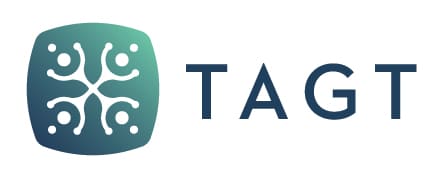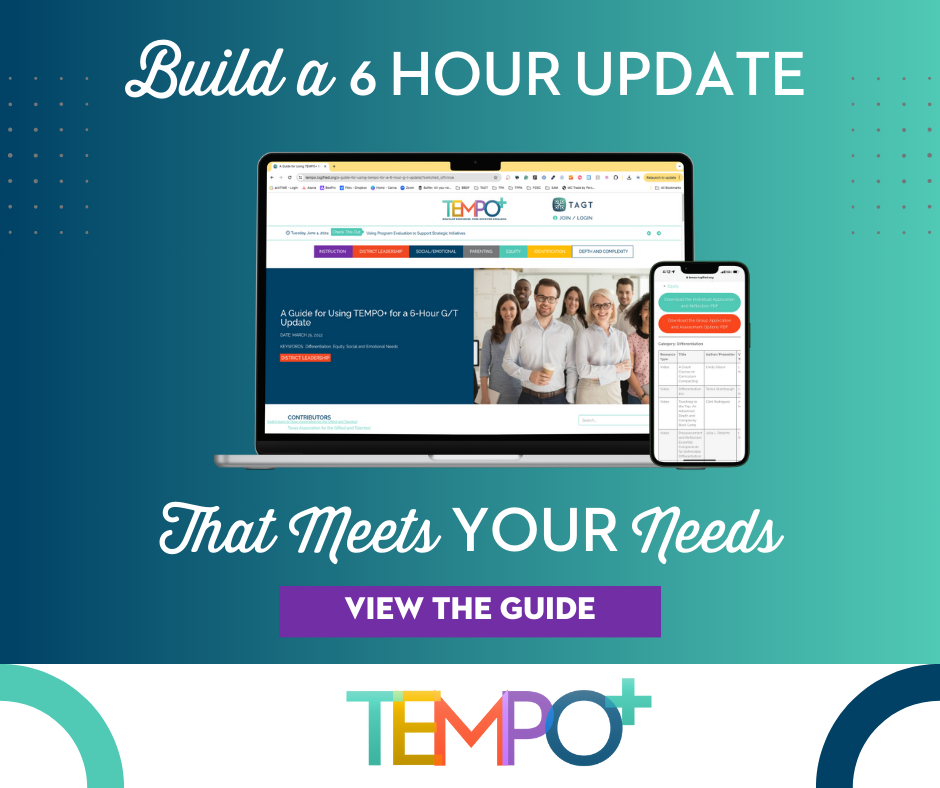All recent literature on 21st-century learning skills recommends that many of the thinking skills that have been a mainstay in gifted education should be made available to all students who spend most of their time in regular classrooms. Even identified gifted students in schools using pull-out programs spend the majority of their time in regular classrooms where there is frequently an emphasis on memorizing received knowledge rather than a focus on higher level cognitive processes and developing investigative and creative mindsets (Renzulli, 2016). The Schoolwide Enrichment Model does not recommend replacing presently effective gifted program services; however, we believe that gifted education specialists should take the lead in infusing more challenge into the regular curriculum.
Applying some of the pedagogy of gifted education to classrooms can lead to total school improvement as well as increased achievement for all students. This is the aim of our work in an enrichment-infusion process called the Schoolwide Enrichment Model (SEM). “Curricular infusion” simply means that we do not argue with the reality of today’s standards and test-driven approaches to school improvement. Rather, we examine materials and teaching strategies that can make the prescribed curriculum more interesting, challenging, and enjoyable. It means we provide the professional development and technology-based resources that allow teachers to promote the three goals of our model (the 3 E’s): Enjoyment, Engagement, and Enthusiasm for Learning; and, the 3E’s apply equally to teachers and students. Teachers who enjoy their work produce the best results, and they know what works best in their classrooms. They also know that no amount of standardization, regulation, or reams of supervisory paperwork can or have made sustainable differences in achievement scores or in the culture of their schools.
Common Goals
Our research with schools using the SEM has shown that anything that saves teachers time, promotes the 3 E’s, and avoids needless paperwork is more likely to be adopted, implemented, and sustained. Our research has shown that an enrichment-based approach (rather than drill-and-practice) actually improves student achievement, improves attendance, minimizes suspensions, increases student and teacher engagement, and promotes greater job satisfaction on the part of teachers. Our SEM model also promotes ownership and educator involvement by providing opportunities for each school to design its own unique approach to SEM. Ownership and creative involvement are what produce sustainability and pride. We believe in common goals like the 3 E’s, but unique means for achieving these goals.
Advanced Levels for All
Most overly prescribed “flavor-of-the-month” school improvement models lack sustainability because they are overly prescriptive. They also factor out the kinds of creative program development and joyful learning opportunities that make teaching the innovative and enjoyable process that attracts people to the profession. Our broadened conception of total talent development advocates general enrichment opportunities for all students and motivates them to pursue self-selected projects at advanced levels. This is a radically different approach from other models that require a student be identified as “gifted” before advanced opportunities, resources, and encouragement are provided.
An emphasis in our work is on infusing highly engaging and enjoyable activities into any and all required curriculum. It is amazing to see how quickly students acquire analytic skills and creative and investigative mindsets—rather than simply memorizing material for the next round of tests. Our studies have shown that when teachers enjoy and are engaged in enrichment activities, the entire atmosphere and the culture of the school changes.
Individualized Enrichment
Technology has made this enrichment infusion easily available to most schools and classrooms. Information about student strengths can be quickly obtained by using an electronically produced profile that documents each student’s interests, learning styles, preferred modes of expression, and academic strengths. A powerful search engine scans through thousands of enrichment activities and matches them to each student’s profile. This technology is a one-of-a-kind tool developed at the University of Connecticut (see renzullilearning.com) that makes personalized learning easy. Teachers can use the same search engine to differentiate their curriculum by entering topics, events, or other keywords to quickly locate thousands of enrichment activities categorized by age/grade levels, standards, and interest areas.
Enhanced Roles for Gifted Education Specialists
When it comes to high levels of cognitive development and creativity, specialists in gifted education are among the most highly trained educators in the world. Although the focus of their work should continue to be on targeted populations of students, their knowledge and experience in more challenging learning strategies places them in the unique position of being instructional leaders who make learning more enjoyable and challenging throughout the entire school. A rising tide lifts all ships, and in schools in which we have worked and where the gifted and talented (GT) specialists have shared their knowledge, the entire culture of those schools has changed. A brief description of the SEM is below.
The Schoolwide Enrichment Model
The SEM has evolved over time after three decades of research and field-testing by both educators and researchers (Renzulli & Reis, 2014). It combines the previously developed Enrichment Triad Model with a more flexible approach to identifying high-potential students. Research on the SEM has been conducted in schools with widely differing socioeconomic levels and program organizational patterns and has shown consistently positive results. In the SEM, a talent pool of 15–20% of above-average ability/high-potential students is generally identified through a variety of measures, including achievement tests, teacher nominations, assessment of potential for creativity and task commitment, as well as alternative pathways of entrance (e.g., self-nomination, parent nomination).
In the SEM, students receive a variety of services. First, interest, learning styles, and product style assessments are conducted with talent pool students using the program Renzulli Learning (www.renzullilearning.com). Each student creates a profile that identifies his or her unique strengths and talents, and teachers identify patterns of student’s interests, products, and learning styles. These methods are used to both identify and create students’ interests and to encourage students to develop and pursue their interests in various ways. Learning style preferences assessed include projects, independent study, teaching games, simulations, peer teaching, programmed instruction, lecture, drill and recitation, and discussion. Product Style preferences include those that are written, oral, hands-on, artistic, displays, dramatization, service, and multimedia.
The curriculum/instructional focus in the SEM for all learning activities is the Enrichment Triad Model (Renzulli, 1977), which was initially implemented in school districts as a gifted and talented program, and is often now integrated into whole-school programming. Research on the use of the Enrichment Triad Model and its integration into the SEM has consistently shown the positive outcomes of the use of this approach with students in urban settings, finding that the enriched and accelerated content can reverse underachievement and increase achievement. The Triad Model is designed to encourage creative productivity on the part of students by exposing them to various topics, areas of interest, and fields of study as well as to further train them to apply advanced content, process-training skills, and methodology training to self-selected areas of interest. Accordingly, three types of enrichment are included in the Enrichment Triad Model. In order for enrichment learning and teaching to be applied systematically to the learning process of all students, it must be organized in a way that makes sense to teachers and students. The Enrichment Triad Model can be used for this purpose due to the fact that it is based on the ways in which people learn in a natural environment rather than the artificially structured environment that characterizes most classrooms.
External stimulation, internal curiosity, necessity, or combinations of these three starting points cause people to develop an interest in a topic, problem, or area of study. Children are, by nature, curious and they enjoy the use of problem solving; but, in order for them to act upon a problem or interest with some degree of commitment and enthusiasm, the interest must be sincere and they must feel a personal reason for taking action. The means by which the Enrichment Triad Model enables the interaction between and among the following three types of enrichment is as important as any type of enrichment or the collective sum of all three types.
Curriculum Compacting
Curriculum compacting (Reis, Renzulli, & Burns, 2016) should be offered and provided to all eligible talent pool students in the SEM. Compacting enables classroom teachers to modify the regular curriculum by eliminating portions of previously mastered content when students show content strengths. Research on compacting has consistently demonstrated that academically talented students can have up to 50–75% of their regular curriculum eliminated or streamlined to avoid repetition of previously mastered work, guaranteeing mastery while simultaneously substituting more appropriately challenging activities. Compacting enables teachers to document the content areas that have been mastered and the alternative, more interesting and engaging work that has been substituted.

Enrichment
The Enrichment Triad Model underlies all enrichment in the academy (see Figure 1). Type I Enrichment consists of general exploratory experiences such as guest speakers, field trips, demonstrations, interest centers, and the use of audiovisual materials and technology (e.g., webinars) designed to expose students to new and exciting topics, ideas, and fields of knowledge not ordinarily covered in the regular curriculum. Type II Enrichment includes instructional methods and materials purposefully designed to promote the development of thinking, feeling, research, communication, and methodological processes. Type II training, usually carried out both in classrooms and in enrichment programs, includes the development of creative thinking and problem solving, critical thinking, and affective processes; a variety of specific learning-how-to-learn skills; skills in the appropriate use of advanced-level reference materials; and written, oral, and visual communication skills.
Type III Enrichment is the most advanced level in the Enrichment Triad Model. Although Types I and II Enrichment and curriculum compacting should be provided on a regular basis to talent pool students, the ability to revolve into Type III Enrichment depends on an individual’s interests, motivation, and desire to pursue advanced level study. Type III Enrichment is defined as investigative activities and artistic productions in which the learner assumes the role of a first-hand inquirer thinking, feeling, and acting like a practicing professional, with involvement pursued at as advanced or professional level as possible given the student’s level of development and age. The most important feature of the model is the “flow” or connection among the experiences. Each type of enrichment is viewed as a component part of a holistic process that blends present or newly developed interests (Type I) and advanced level thinking and research skills (Type II) with application situations based on the modus operandi of the first-hand inquirer (Type III).
Renzulli Learning Systems
Students in SEM programs also have access to Renzulli Learning System (RLS), another research-based component of our model. Gara Field (2009) studied the use of Renzulli Learning, an innovative online enrichment program based on the Enrichment Triad Model, finding that gifted and nongifted students who participated in this enrichment program and used Renzulli Learning for 2–3 hours each week demonstrated significantly higher growth in reading comprehension than control group students who did not participate in the program.
Four steps enable students to have access to enrichment during the day as well as after school and at home if the technology is available in their homes. The first step consists of a computer-based diagnostic assessment that creates a profile of each student’s academic strengths, interests, learning styles, and preferred modes of expression. The online assessment, which takes about 30 minutes, results in a personalized profile that highlights individual student strengths and sets the stage for step two of the RLS. The profile serves a compass for the second step, which is a differentiation search engine that examines thousands of resources that relate specifically to each student’s profile. A project management tool guides students and teachers to use specifically selected resources for assigned curricular activities, independent or small group investigative projects, and a wide variety of challenging enrichment experiences. Another management tool enables teachers to form instructional groups and enrichment clusters based on interests and learning style preferences. Teachers have instant access to student profiles, all sites visited on the web, and the amount of time spent in each activity. Parents also may access their child’s profile and web activities. In order to promote parent involvement, we suggest that students work on some of their favorite activities with their parents.
Next, the differentiation search engine matches student strengths and interests to an enrichment database of 50,000 enrichment activities, materials, resources, and opportunities for further study that are grouped into the following categories: virtual field trips, real field trips, creativity training, critical thinking, projects and independent study, contests and competitions, websites, fiction and nonfiction books, summer programs, online activities, research skills, and high-interest videos and DVDs. Many of these resources provide methods of inquiry, advanced-level thinking and creative problem solving skills, and investigative approaches. Students are guided toward the application of knowledge to the development of original research studies, creative projects, and action-oriented undertakings that put knowledge to work in personally meaningful areas of interest and provide students with suggestions for outlets and audiences for their creative products. The resources available in this step also provide students with opportunities to pursue advanced level training in both areas of strength and of personal interest.
The third part of Renzulli Learning for students is a project organization and management plan called The Wizard Project Maker. Using this project planner, teachers can help students target their web-based explorations to undertake original research, investigative projects, and the development of a wide variety of creative undertakings. The sophisticated software used in this tool automatically locates potentially relevant web-based resources that can be used in connection with the student’s investigative activity. This management device is designed to fulfill the requirements of a Type III Enrichment experience, which is the highest level of enrichment described in our discussion of the Enrichment Triad Model.
The final step in the Renzulli Learning System is an automatic compilation and storage of all student activity from Steps 1, 2, and 3 into an ongoing student record called the Total Talent Portfolio. A management tool allows students to evaluate each site visited and resource used. Students can complete a self-assessment of what they derived from the resource, and, if they choose, they can store favorite activities and resources in their portfolio. This feature allows easy-return access to ongoing work. The portfolio can be reviewed at any time by teachers and parents through the use of an access code, which allows teachers to give feedback and guidance to individual students and provides parents with information about students’ work and opportunities for parental involvement. The Total Talent Portfolio can travel with students throughout their years at the academy to serve as a reminder of previous activities and creative accomplishments that they might want to include in college applications, and it is an ongoing record that can help students, teachers, guidance counselors, and parents make decisions about future educational and vocational plans. Teacher resources in the RLS enable educators to differentiate assignments and send tiered and compacted assignments to students by placing them in their electronic talent portfolio. Teachers can also use RLS to group students based on their interests, learning, and expression or product styles.
We believe that the development of abilities is accomplished when individuals begin the process of developing their academic abilities and interests both in and out of school. The development of task commitment and creativity, both defined in the Renzulli Three Ring Conception of Giftedness, is accomplished when individuals find an area in which they desire and choose to develop their academic abilities and interests. When children experience and enjoy creative and productivity experiences, such as Type III projects, we have learned that they are more likely to seek additional creative and productive experiences later in life.
Over time, we have come to understand that creative productive experiences in elementary or secondary school enable some academically talented students to learn to relish creative experiences and become more likely to pursue these options in their adult lives, leading to a more creative and productive personal life, regardless of the work and career they select. Our four decades in developing the SEM have convinced us that our work will help to increase the likelihood that more young students will grow up to become inventors, creators, and highly productive adults, something that our country both needs and deserves.
References
Field, G. B. (2009). The effects of using Renzulli Learning on student achievement: An investigation of Internet technology on reading fluency, comprehension, and social studies. International Journal of Emerging Technology, 4, 29–39.
Reis, S. M., Renzulli, J. S., & Burns, D. E. (2016). Curriculum compacting: A guide to differentiating curriculum and instruction through enrichment and acceleration (2nd ed.) Waco, TX: Prufrock Press.
Renzulli, J. S. (1977). The Enrichment Triad Model: A guide for developing definsible program for the gifted and talented. Mansfield Center, CT: Creative Learning Press.
Renzulli, J. S., & Reis, S. M. (2014). The Schoolwide Enrichment Model: A how-to guide for educational excellence (3rd ed.) Waco, TX: Prufrock Press.
Renzulli, J. S. (2016). A theory of blended knowledge for the development of creative productive giftedness. International Journal for Talent Development and Creativity, 4, 1–2.
Joseph Renzulli, Ph.D., is a professor of educational psychology at the University of Connecticut. His research has focused on the identification and development of creativity and giftedness in young people and on curricular and organizational models for differentiated learning environments that contribute to total school improvement. A focus of his work has been on applying the pedagogy of gifted education to the improvement of learning for all students. Dr. Renzulli is a Board of Trustees Distinguished Professor. In 2009 Dr. Renzulli received the Harold W. McGraw, Jr. Award for Innovation in Education.
Sally Reis, Ph.D., is a Board of Trustees Distinguished Professor and a Teaching Fellow in Educational Psychology at the University of Connecticut. She currently holds the Letitia Neag Chair in Educational Psychology. She has authored more than 250 articles, books, book chapters, monographs, and technical reports. Sally is a past-president of the National Association for Gifted Children, a fellow of the American Psychological Association, and a Distinguished Scholar of the National Association for Gifted Children.






